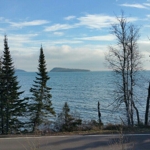
Grand Portage National Monument
Add to Favorites
OPEN NOW
Today: 9:00 am - 4:30 pm

Parking: Lot
Phone: (218) 475-0123
Address: 170 Mile Creek Rd, Grand Portage, MN 55605
Website: http://www.nps.gov/grpo
40 Store Rd, Grand Portage, MN 55605
Upper Rd ||, Grand Portage, MN 55605
Indianapolis, IN 46202
30820 111th Street, Wilmot, WI 53192
100 S College St, Harrodsburg KY, 40330, Harrodsburg, KY 40330
Broadway At Central, Wichita, KS 67201
Hutchinson, MN 55350
Hillsboro, WV 24946